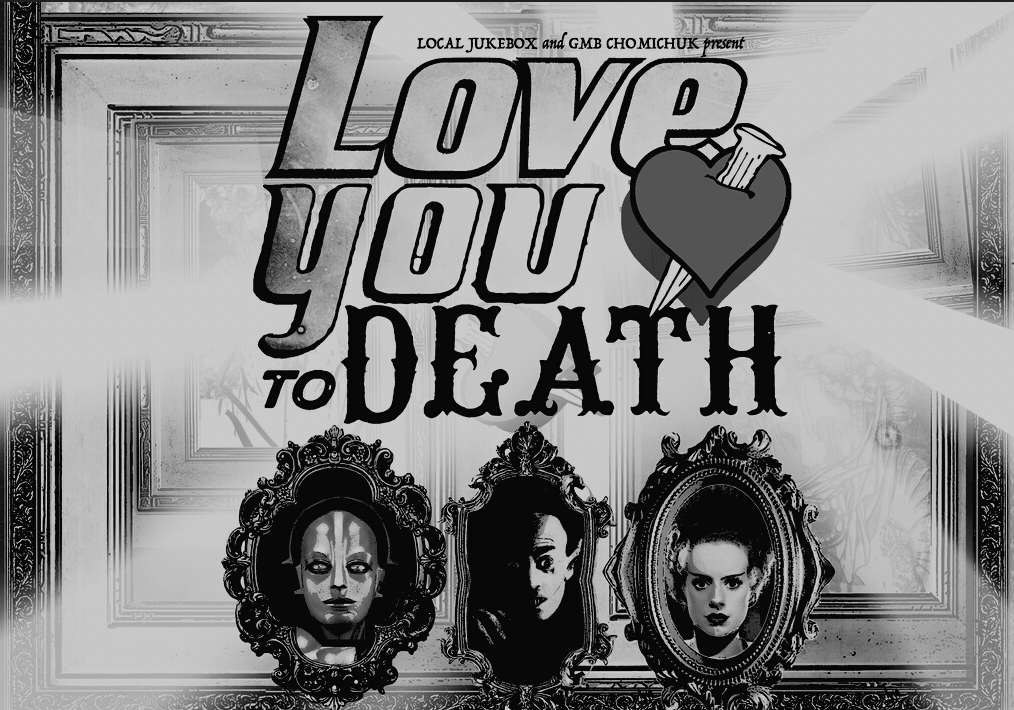
by Paul Newsom
The Park Theatre is not quite packed as Love You to Death’s first film begins, yet the venue feels no less alive for that fact.
The commonalities with the last show I saw here – Godspeed You! Black Emperor – are several: both rely on live music and film as fundamental performance features; each show’s respective band is composed of brilliant, multi-instrumental performers; both crowds cheer ecstatically at pivotal moments while waiting in rapt silence through the tension-building bulk of the performance. Though Love You to Death is uniquely punctuated by laughs – some of which might not have been shared at the time of the films’ debut – there is also a deadly seriousness to the vibe of appreciation underlying it all.
Where GY!BE’s projectionist was ever adaptive to the band’s performance; the inverse is true for Love You to Death: the drummer taps a cymbal in unison with a wee skeleton knocking glass on a grandfather clock during Nosferatu; bass notes swing along with one of the doctor’s contraptions during Bride of Frankenstein; theremin swells and guitar notes shimmer through Metropolis’s climax, as throngs of on-screen people thrash around in electric panic. Every scene is coloured by enough musical vision to be captivating by itself, yet never so much as to distract from the films. As someone who hasn’t seen any of the films before, I am awestruck by the film quality, practical effects, and, in particular, the use of aerial shots. The past revealed by these movies feels grand and soulful, at least as often as it feels naive.
The inter-film breaks feel memorable thanks to a sardonic-spooky narrator, whose vibe gradually morphs from eerie deadpan to existential-nostalgic. Attendees are reminded of the evening’s extra offerings: tarot cards, spooky art for sale, and even having one’s portrait taken with Chalice, the Undead Bride.
Once the emcee has said his piece, modern blockbuster movies’ soundtracks fill the dead space during intermissions, providing ample inspiration for reflection on the era of the three films’ release. Were they seen as goofy? Were they startling? How many friends walked out of the same theatre with mixed reactions to the bold new offering from Lang or Murnau?
Despite showcasing genres which developed well after the films’ debut, it is also easy to see how audiences might have appreciated the evening’s soundtracks had they somehow been included with their original release. The music runs the gamut from classic country through post-rock through classical through reflective guitar and cello solos. Some of the theremin-heavy songs feel decidedly 60s, in the vein of the Tornados.
In his final reflective spiel, the emcee notes how being remembered and celebrated 100 years post-release speaks to the power and endurance of films. I can’t disagree. From the genuine horror of Hutter discovering Count Orlok sleeping in his coffin to the anguish of the monster as he destroys the laboratory, these films are filled with moments as genuinely moving as they are memorable – and made all the more so in this case by loving accompaniment.

